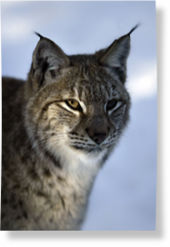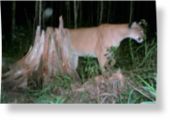
© Heikki Kotilainen/Helsingin SanomatOur numbers are growing... The number of lynx in Finnish forests is said to be at the highest level for a hundred years.
The Finnish population of the Eurasian lynx (Lynx lynx) has increased, and the animal's presence has been noticed in residential areas as well.
"The bigger the amount of lynxes, the sooner they get used to people, and the animal begins to trust humans", says special researcher Ilpo Kojola from the Finnish Game and Fisheries Research Institute.
"The number of lynxes in Finland is about 1,500 individuals", Kojola adds.
A lynx can appear in a backyard when the day grows dimmer.
"There it may be seen sitting and observing its surroundings in a seemingly carefree manner, even if the garden lights are switched on", Kojola notes.



